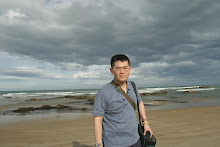These photographs showcase areas of Granite Island that were not included in my earlier publications. The striking red mosses adorning the granite rocks are a distinctive and captivating feature of the island’s natural landscape. Granite Island, located just off the coast of Victor Harbor in South Australia, is famed for its extensive granite outcrops formed millions of years ago, which have shaped its unique terrain and ecosystem. The island boasts a rich history, having been inhabited by the Ngarrindjeri people for thousands of years before European settlement, and today serves as a protected reserve supporting diverse native flora and fauna, including the well-known little penguin colony. I find great enjoyment and solace in experiencing the island’s remarkable natural beauty and the opportunity to immerse myself in its serene environment.
Sony A7RV
FE 20-70mm f4 G
Linking Water H2O Thursday




















































